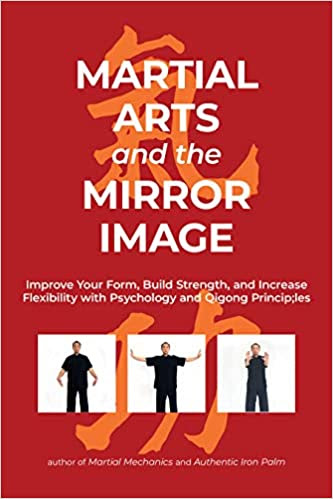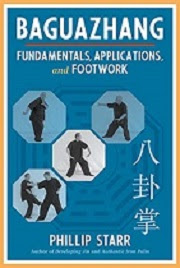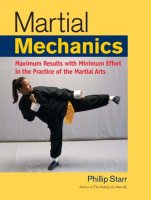by Phillip Starr
If you swing it around it has tremendous potential energy but if it doesn't hit anything, it's harmless. The potential energy is never released in the form of kinetic energy. Actually, it is still quite soft; it isn't stiffened at all... until it meets resistance; i.e., the target.
At the instant of impact, it is the RESISTANCE, the target itself that CAUSES THE CHAIN TO HARDEN! The links align and for an instant – just an instant – the chain becomes as a steel rod and if there's a weighted metal tip on it, that tip becomes a lethal weapon that transfers every last drop of energy into the target. This phenomenon lasts only for a micro-second, after which the chain once again becomes soft.
Isn't martial art technique the same? You will probably answer in the affirmative but then consider and ask yourself if you start to tense up BEFORE your fist or foot makes impact with the target? Well, DO YOU? If you do, you're blocking the free flow of power to the target!
“So”, you ask, “Should I stay relaxed until the moment of impact and then tighten up my muscles like the chain?” And my smile would be followed with a thunderous “NO, YOU DIMWIT!” Think on the analogy of the chain once again and reread the first sentence of the third paragraph. Let it sink it. Digest it.
Let the target (the resistance) CAUSE whatever measure of tension is required; DO NOT try to do it yourself! You'll probably generate too much or too little (tension) and in any case, the moment of impact lasts for such a very short time that your timing will very likely be too early or too late! Just let nature – and physics – do everything for you. Your job is to ensure that everything is properly aligned; that all of the “links” in the chain are correctly adjusted (so that they all inter-support each other), so that (kinetic) energy is not lost. Actually, you're going to lose some of it – that's simply unavoidable – but try to lose as little as possible.
Sure, it sounds simple enough but it requires a good deal of practice. Overcoming the inherent tendency to tighten up, making sure that the body parts are correctly coordinated and aligned...takes a tremendous amount of practice. Even tightening your fist before impact will cost you power. I often tell my students to make a fist as if they've just caught a fly but don't want to crush it. No daylight seeps in (lest the fly escape) but it isn't tight, either. Impact will tighten it for you!
This is the secret of what is known as “kime” in Japanese (pronounced “kee-meh” for you rednecks out there). I have heard on taijiquan practitioner say that chansi-jin (silk-reeling power) is actually generated by maintaining a relaxed condition until the instant of impact... and then body is tightened for just a second. The gentleman who spoke these words said that such was the instruction provided him by a renowned member of the Chen family (who practice Chen style taijiquan in China and teach seminars worldwide). And... he's wrong. Real chansi-jin is another story, but that's outlined in my book, “DEVELOPING JIN.” Certainly the analogy of the chain is applicable, but there's much more to it than that.
And, like the chain, you must not retain any of the (kinetic) energy once impact is made. You have to adhere to the old Christian adage, “T'is better to give than to receive”, and give all of it – every last micro-measure – to the intended target. To do otherwise means that your target receives much less than 100% of the power that you can give to it. If you consciously tighten up, the time of impact is increased and that reduces striking force considerably.
I've seen countless students and teacher alike who, after executing a punch, have what I call a “bouncing fist.” That is, the punching fist seems to bob up and down a wee bit after the punch has been performed. This is indicative of excess tension (energy) being stored in the arm and hand; it is energy that has NOT been transferred to the target. At the instant AFTER impact, your bodily weapon should be empty. Totally.
To strike with real destructive force doesn't require great strength. It requires correctness. There's a difference. All of this is found in the book, “MARTIAL STRUCTURE.”









.jpg)

















No comments:
Post a Comment